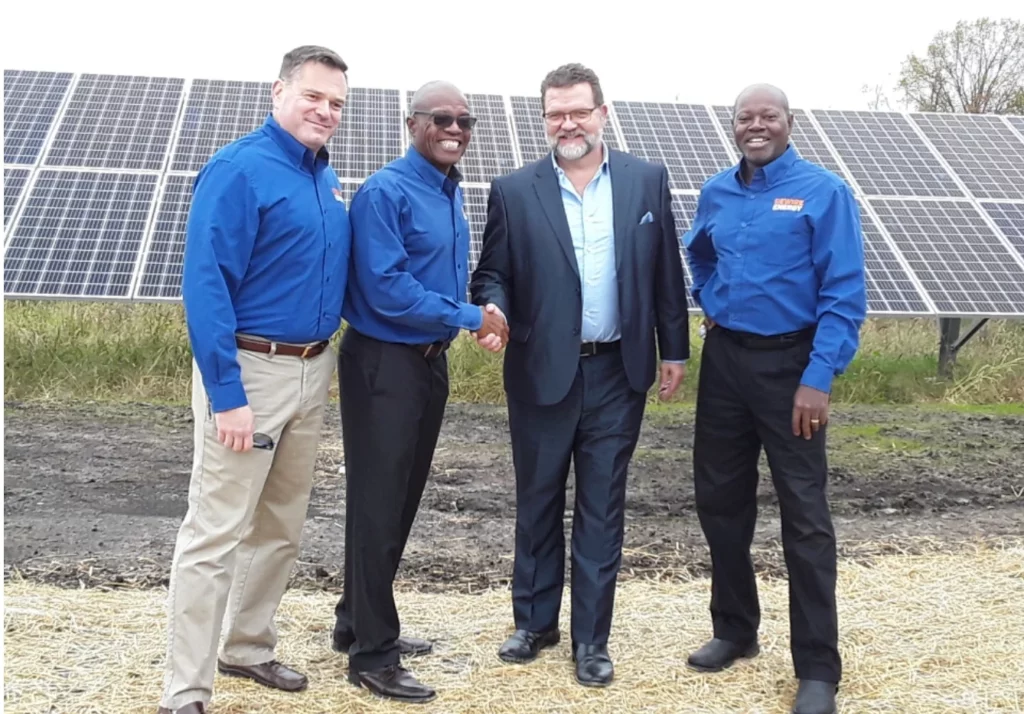As the solar industry continues to boom, prices remain a huge obstacle to mass adoption.
Thankfully, community solar programs offer consumers an easy and cost-efficient way to access renewable energy in their area without the upfront cost of purchasing a solar panel.
By enrolling in a community solar program, consumers can reduce their carbon footprint, power their homes with renewables, and even lower their utility bills.
We’ll explore the benefits of community solar programs and explain how they work based on key insights we’ve acquired from working extensively with New York’s community solar programs.
Community solar programs are local purchasing programs that allow consumers to lease or subscribe to solar-based projects in their area.
For customers who don’t have the money or are unwilling to install solar panels on their roofs, these community projects offer them a way to source their electricity through solar without the hefty investment.
Consumers benefit from lower utility bills and cleaner energy, while the project owners accrue revenue. Utility providers even benefit as community solar projects promote greater stability for the grid.
Projects may be developed at an off-site grid or on-site in the case of condominiums, HOAs, and industrial parks.
Some people may refer to community solar projects as solar gardens, parks, or even rooftops, depending on their specific composition.
There are two different models in which customers can access community solar projects:
The subscription model offers a more affordable way to access community solar projects, while the ownership model requires a larger investment but more long-term savings.
Unfortunately, not every state offers community solar programs, so access depends on your location.
Currently, 39 states, including Washington D.C., have a rudimentary community solar program in place, while 22 states, including Washington D.C., have policies in place to support community solar projects.
Community solar projects are handled by third-party vendors who operate within the state’s open energy marketplace to provide alternatives to consumers.
It should be noted that ¾ of the total market share of all community solar projects is concentrated in four states: New York, Florida, Minnesota, and Massachusetts.
Anyone without solar panels can benefit from sourcing their energy needs from a community solar project. However, we find that these projects tend to appeal to and benefit the following demographics:
Community solar projects can be built anywhere with enough land mass to accommodate large solar panels. Some common projects you may see in your area include:

Community solar programs work great in theory and offer several benefits to consumers and utility providers. However, there are some disadvantages to community solar programs, especially when compared to purchasing your own solar panels with a home battery backup.
Utility providers can also benefit from community solar programs by acquiring energy from more stable sources. Likewise, the concentration of energy production in one area also helps promote grid stability in that area.
Utility providers can also better meet renewable goals set up by their state by working with local solar projects in their area.
Lastly, community solar projects also help spur engagement between members of the community and their utility providers by helping to acquaint them with where they source their energy. Similar to the farm-to-table trend, community solar projects allow community members to come together over shared goals, such as reducing their collective carbon footprints.
If you don’t own solar panels or have the means to acquire them, then there are virtually no downsides to joining a local community solar project.
In our experience, customers have saved anywhere from 5% to 15% on their utility bills just by subscribing, and they always feel comfortable knowing they are receiving clean energy.
Plus, with the inflation rate hitting the natural gas market, community solar is a great inflation buster that can prove promising and reliable in the long run.
Driving the clean energy movement one step at a time and making a positive impact on the environment.
The Clean Energy Life is part of the Rewire Group and is a companion site to Rewire Energy, and Rewire Digital.
Website Copyright 2023, Rewire Group LLC, DBA – The Clean Energy Life, All rights reserved.
Website Hosting and design by Rampant Imaginations